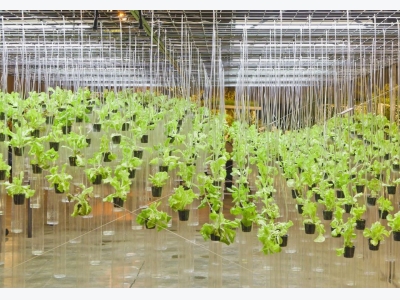A Beginners Guide to Hydroponics

What is Hydroponics & How To Get Started
David Madison/The Image Bank/Getty Images
The first step to setting up your first hydroponic garden is selecting a system that best fits your needs. Important factors to consider include, how much space you have, what you want to grow and how much, cost, and how much time you have to spend maintaining the system. The three most basic setups recommended for beginners are Wick, Water Culture, and Ebb & Flow. All 3 of these systems can be built from separate components or bought complete either online or in a hydroponics store.
Wick Systems
Wicke systems are by and large the most simple and easiest to set up because there are no moving parts. The system contains a reservoir filled with water and nutrients and above it, a container filled with growing medium. The two containers are connected by a wick, which draws the nutrient-filled water up into the growing medium where it is happily absorbed by your plants. This system is great for learning the basics, but may not work well with large or water-hungry plants such as lettuce, because the wick cannot supply water fast enough. This system works extremely well with micro greens, herbs, and peppers.
Water Culture
It is another extremely simple system to set up. In this system, the plants are placed into a Styrofoam platform that sits right on top of the reservoir. An air pump is added to the reservoir to deliver oxygen to the roots. This system is ideally suited for water-hungry plants, but not for more long-term plants such as tomatoes.
Ebb & Flow
Ebb & Flow systems are slightly more complex but are extremely versatile. This system works by flooding the growing medium with a solution and then draining it back into the reservoir. To do this, you need a submersible pump with a timer. One of the greatest advantages of Ebb & Flow is that you can use the timer to customize your plants’ watering schedule based on the plant size, number of plants, temperature, humidity, etc.
You also have the option of potting plants individually for easy customization or filling the entire tray with growing medium and planting directly in the tray.
Choosing What to Grow
Just about any plant can be grown hydroponically, but for beginners, it is best to start small. The best choices are herbs and vegetables that grow quickly, require little maintenance, and do not have a huge variety of nutrient needs. You want fast-growing plants so that you can assess how well your system works and tweak it as necessary. It would be a real letdown to wait months until harvest time only to find out your system is not working properly. Maintenance-free plants are great for beginners because they allow you to focus on learning about your system- you can move on to more complex veggies later. If you are growing a variety of plants, it is also important to make sure that they are similar in their nutrient requirements, so that they grow well together.
Good Starter Plants
- Greens such as lettuce, spinach, Swiss chard, and kale.
- Herbs such as basil, parsley, oregano, cilantro and mint
- Tomatoes
- Strawberries
- Hot Peppers
Related news
 Best Patio Tomato Varieties
Best Patio Tomato Varieties If you only have room to grow a few plants in containers, it is important to choose those plants wisely. Tomatoes are a great choice for patio gardens.
 What You Need to Know About the Bee Balm Plant
What You Need to Know About the Bee Balm Plant Bee balm, which is also known as Oswego tea, horsemint and bergamot, is a versatile perennial plant that can add color and beauty to any garden.
 15 of the Best Common Organic Fertilizers
15 of the Best Common Organic Fertilizers Understanding the common organic fertilizers available is as simple as knowing what each offers your soil and how “available” (easily accessed) those offerings